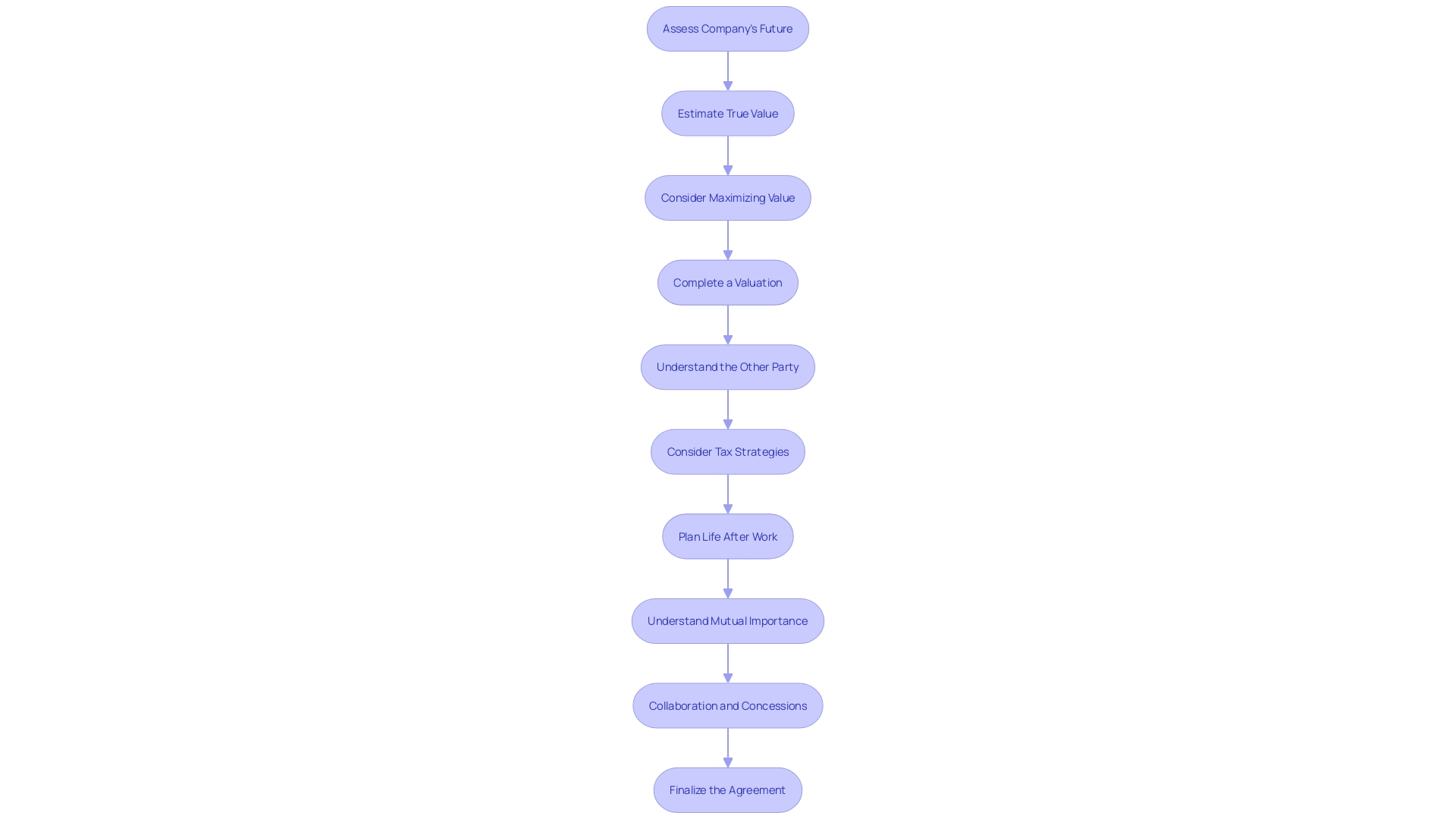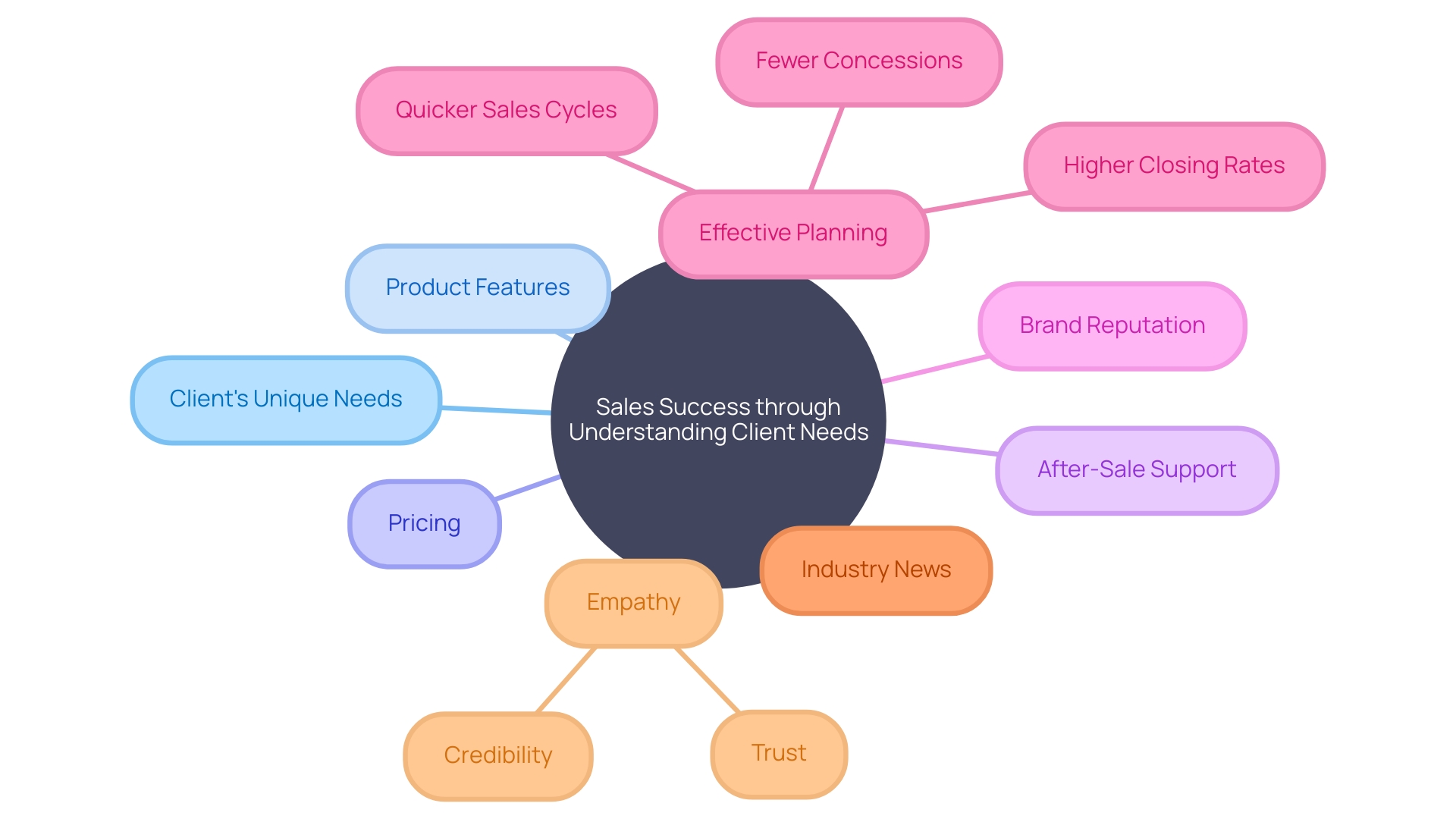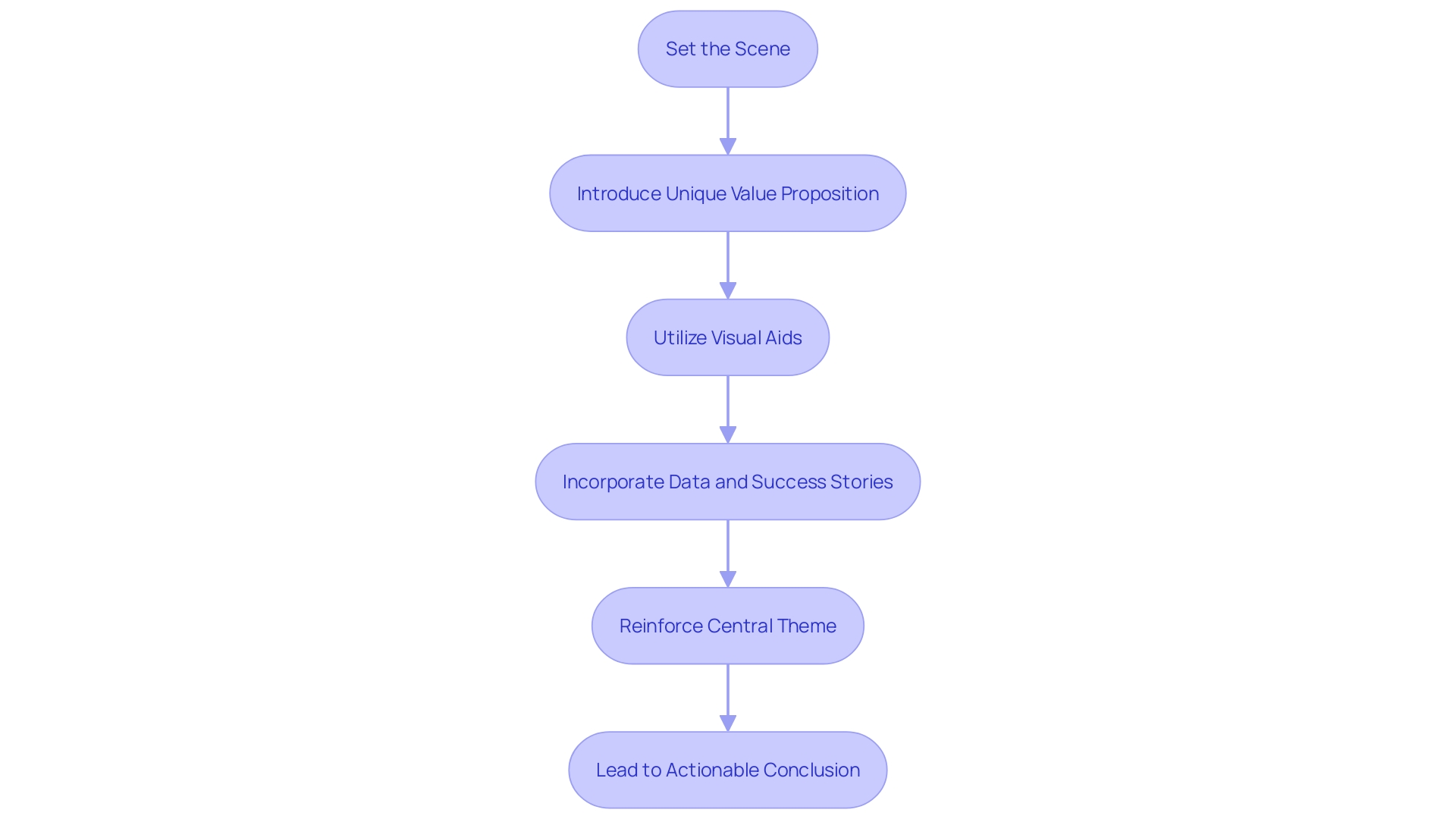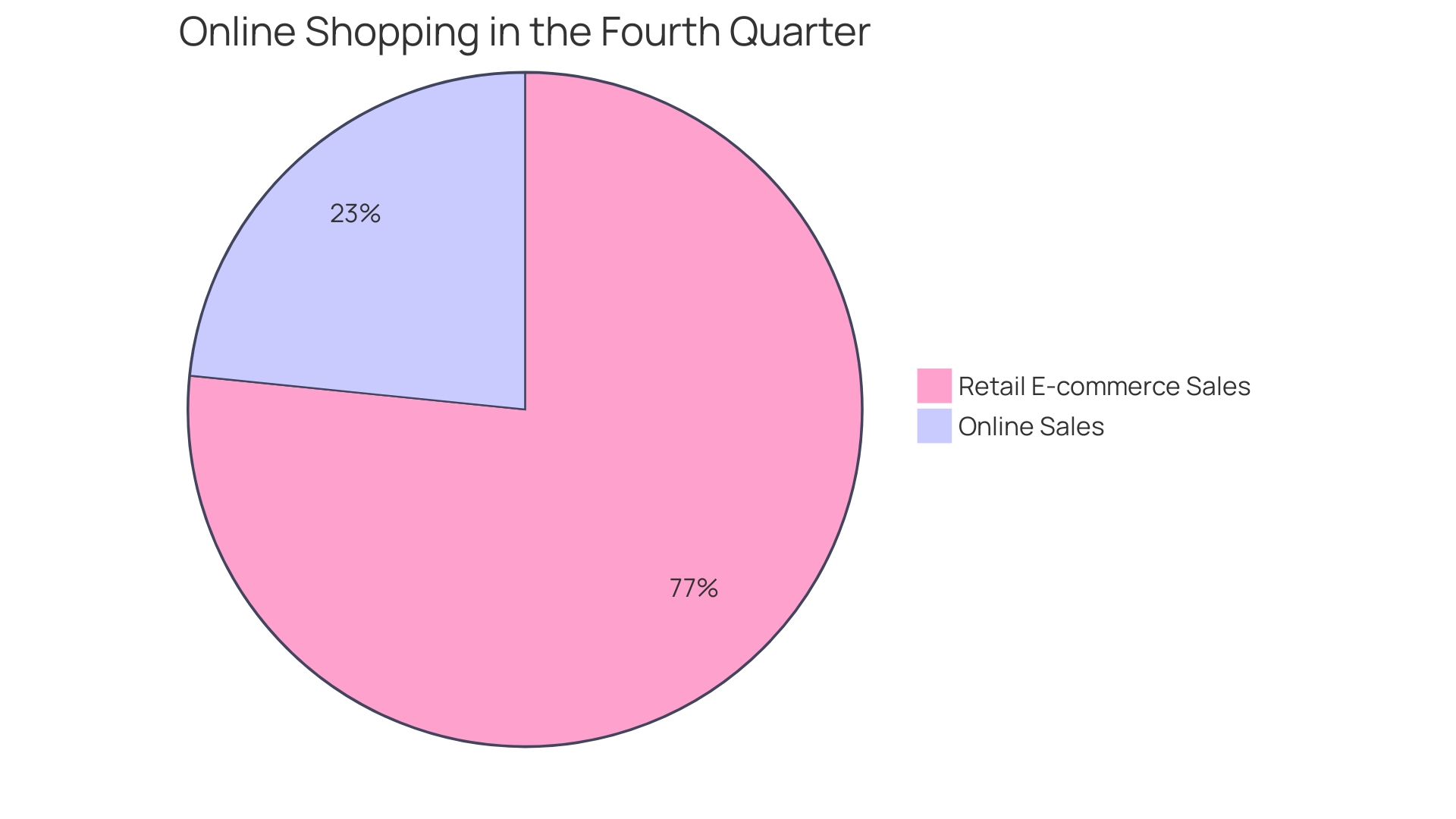Introduction
The process of buying and selling businesses is a complex endeavor that requires a strategic and well-defined sales process. In order to succeed, sales professionals must understand the art of negotiation and the importance of selling the value before discussing the price. This article explores the key steps in the sales process, from prospecting and preparation to approaching potential customers and delivering compelling presentations.
It emphasizes the significance of addressing objections, closing the sale, and providing post-sale follow-up to ensure long-term customer satisfaction. The article also highlights the benefits of a well-defined sales process, such as shorter sales cycles and higher close rates, and discusses the tools and technology that can enhance the sales process. Metrics and performance tracking are explored as essential components for optimizing business transactions, and the article concludes by emphasizing the importance of continuous improvement and feedback in refining sales strategies and staying competitive in the marketplace.
Understanding the Sales Process
The art of negotiation in business transactions is not just about discussing the price; it's a sophisticated dance that revolves around the perceived value of what's being offered. It's essential for sales professionals to grasp that the conversation should start by selling the value. Prior to hammering out the terms of the deal, it's imperative to understand the client's most valued factors.
Is their focus on quality, unique features, cost efficiency, customer support, or the brand's reputation? Knowing this enables you to tailor your pitch to their specific needs and kick off the discussion on firm footing.
When you're setting out to negotiate, it's crucial to have a handle on how the negotiation will proceed and the stakeholders involved. A well-laid plan can be a game-changer, leading to more efficient sales cycles, higher rates of closing deals, and fewer concessions. In fact, studies over the past two decades underscore the benefits of strategic planning in negotiations.
To enhance your negotiation strategy, consider employing the SPIN selling technique, which involves asking strategic questions. These questions delve into the client's situation, problems, and needs, allowing you to suggest the most effective solutions. Armed with a comprehensive understanding of your client's background, possibly aided by tools like a CRM system, you can approach the negotiation table well-prepared.
Furthermore, it's crucial to keep an eye on your sales conversion rate, as it reflects the effectiveness of your sales strategy. Understanding your sales data trends and setting clear goals for your sales data analysis will guide you in making informed decisions and strengthening your sales approach. By focusing on the relevant sales metrics, you can streamline your efforts to achieve your business objectives.

Key Steps in the Sales Process
Navigating the journey of buying or selling a business can be complex, but understanding the critical steps of the sales process can set you on the path to success. Prospecting is the starting point, where you identify potential buyers or sellers. This is followed by preparation, a phase in which you must gather in-depth knowledge about the business at hand, similar to how Tech Ladies grew to a multi-million dollar acquisition by deeply understanding their community and market.
The approach is your next step, where you make initial contact, much like engaging with prospective properties in Akiya's case study, where understanding client needs was paramount.
A compelling presentation of your business is crucial, highlighting the value proposition clearly to the client. Addressing objections is an inevitable step, and doing so confidently can steer the negotiation in your favor. Closing the sale is your goal, but achieving a successful close means understanding the nuances of negotiation, as emphasized by sales experts.
The process doesn't end with the sale; post-sale follow-up ensures long-term satisfaction and potential future business. Remember, each of these steps is a building block towards a profitable and satisfying deal, where the buyer's experience is enhanced through careful planning and execution.
Prospecting: Finding Potential Customers
Prospecting, the art of identifying potential clients who might benefit from your offerings, is a delicate balance of strategy and insight. To master this craft, one must delve beyond the surface of networking events, cold calls, and digital lead generation. It is about understanding the nuanced behaviors of early adopters—those who embrace innovation with enthusiasm.
These individuals are not just the first to trial new technologies; they are the trendsetters in their communities, eagerly adopting the latest gadgets like iPhones or MacBooks as soon as they hit the market.
To spot these trendsetters, one must be vigilant and informed, tracking consumer trends and demographics. For instance, consider the demographics of your current clientele and compare them to emerging market segments. Utilize tools like Google Analytics and Conversion Tracking to pinpoint where your customers reside and the growing geographical markets.
Engaging with your prospects meaningfully is also crucial. Techniques like SPIN selling, which involves asking strategic questions about the situation, problem, implications, and needs, can uncover deep insights into your potential clients' challenges and desires. This approach requires a profound understanding of your client, which can be facilitated by CRM systems like Salesforce, allowing for tailored conversations that resonate.
Moreover, platforms such as Twitter and Quora offer fertile grounds for prospecting, with users on Twitter frequently influenced by discussions to make purchases and those on Quora actively seeking expertise and solutions in their fields of interest.
When it comes to prospecting, the focus should be on quality over quantity. A well-conducted interview with a handful of carefully selected prospects can yield more valuable insights than numerous unfocused conversations. It's a strategic process that involves asking the right questions, leveraging the right tools, and identifying the right prospects—those early adopters who are not just ready but eager to engage with your innovative products and services.
Preparation: Research and Sales Presentation
To ace the sales game, it's not enough to just pitch your product's features and benefits. Today's savvy buyers expect more—they want to know how your offering solves their problems and adds value to their business. That's why the most successful sales professionals do their homework before any negotiation begins.
They dive deep into understanding the client's unique needs, identifying what truly matters to them. Is it the quality, price, or the after-sale support that will sway their decision? Do they value a product's specific features or the brand's reputation?
This knowledge empowers you to present your product or service in a way that hits right at the heart of what the client is looking for.
This strategic preparation is backed by research showing that when salespeople plan effectively before entering negotiations, they enjoy benefits like quicker sales cycles, higher closing rates, and fewer concessions. One staggering statistic reveals that nearly one in three salespeople leave their job each year, a turnover rate three times higher than the average profession. This could be due to the lack of proper planning and understanding of customer needs—a gap that, when bridged, can lead to more successful and satisfying sales experiences.
Moreover, keeping abreast of industry news, such as the impact of interest rates on loan growth, can offer invaluable insights into client challenges. This not only showcases your expertise but also demonstrates empathy, which can be a powerful tool in establishing trust and credibility with potential customers. Remember, in the end, it's about making sure your sales pitch resonates with the client's core requirements, setting the stage for a winning negotiation.

Approach: Initial Contact with Potential Customers
Making a stellar first impression is crucial in the digital age, where your initial interaction with potential customers can take various forms, from a website visit to a phone call or email. It's essential that your opening approach be not only professional but also tailored to the individual, demonstrating a clear understanding and interest in their specific needs.
Consider the story of Cindy's customer service issue, where the company's online support system, including a chatbot, efficiently guided her to a solution. This exemplifies the importance of providing a consistent, positive experience across all customer touchpoints. Similarly, for businesses like Doppler, adapting to the market by focusing on 'secrets management' in software development demonstrates the need to pivot strategies to better meet customer needs.
The customer experience begins long before a sale and extends beyond it. Shepard Presentations, LLC emphasizes that each interaction, from the first exposure to marketing messages to post-sale support, forms a part of this journey. Therefore, it's pivotal that the initial contact sets the tone for a favorable customer service experience, which has been shown to significantly influence a company's reputation and customer loyalty.
Statistics support the notion that a business's online presence, such as its website design, plays a significant role in forming first impressions. A modern, well-maintained website signals professionalism and attention to detail, while a neglected online presence can deter potential clients.
In summary, your approach should embody professionalism, personalization, and a focus on the customer's needs, setting the stage for a comprehensive and rewarding customer experience.

Presentation: Demonstrating Your Product or Service
Crafting an effective sales presentation is an art that combines the allure of storytelling with the precision of a well-executed strategy. Imagine you're painting a picture for your audience, where your product or service is the hero of the story. Begin with setting the scene by highlighting the current market landscape and the challenges it presents.
Move on to introducing your unique value proposition that can disrupt the status quo.
For example, consider how a budgeting app like YNAB captures attention by addressing real-life financial concerns, offering resources like workshops and award-winning support to empower customers. Or take a hotel company that, through meticulous keyword research and digital tool integration, successfully boosted bookings. These examples underscore the importance of a tailored approach that speaks directly to the audience's needs.
Embrace the power of visual aids, like the simplicity of a clean presentation design that focuses on your core message without distraction. Utilize compelling visuals and bullet points to distill complex information, making it accessible and memorable. Incorporate credible data and real-world success stories to bolster your case, much like Ceeblue's transition to managed services, which provided tangible benefits to their clients.
Remember, the essence of your presentation hinges on the connection you forge with your audience. It's about transforming technical details into relatable benefits that resonate on a personal level. As the narrative unfolds, ensure each slide, each example, and each statistic is meticulously chosen to reinforce your central theme, leading your audience to a clear and actionable conclusion.
In doing so, you position your presentation not just as a pitch, but as an essential chapter in the success story of your potential clients.

Handling Objections and Addressing Concerns
When a client voices concerns during the sales process, it's more than a hurdle; it's an opportunity to deepen the relationship and reinforce the value of your offer. Experienced sales professionals know that negotiation transcends mere pricing—it's about understanding and delivering on what the client truly values. Research has consistently shown that a well-prepared negotiation, which takes into account the client’s core needs and preferences, not only shortens the sales cycle but also improves the likelihood of closing the deal with fewer concessions.
Consider the wisdom of experts in revenue management and problem-solving in the hospitality industry, like Strategic Solution Partners. They emphasize the importance of tailoring solutions to each client’s specific challenges and goals. Similarly, when a client hesitates, listen intently, reflect their concerns back to them, and use narrative and visuals to present a strategy that is both aspirational and concrete.
Such an approach can transform doubts into clarity and alignment, guiding the client to see the value beyond the product itself.
Moreover, it's vital to recognize that selling is not just about securing a 'yes'; it's about engaging in a dialogue that builds trust. With most sales professionals experiencing a close rate below 50%, it’s clear that success isn't solely about the number of deals closed but the quality of connections made. By incorporating techniques like the 'prize frame,' you subtly communicate the exclusivity and desirability of what you offer, making the solution seem more valuable in the eyes of the client.
Lastly, remember that sometimes, despite your best efforts, a client may not be ready to take your advice or may not align with the solution you offer. In such cases, it's essential to consider whether to proceed with the sale. As noted by industry leaders, even if you walk away from a deal because it's not in the client’s best interest, you maintain your integrity and position yourself as a trusted advisor, not just a vendor.
This stance could ultimately lead to more fruitful collaborations in the future.
Closing the Sale and Post-Sale Follow-Up
Achieving a successful transaction in the business marketplace is the crescendo of a strategic and carefully orchestrated process. It's a moment that encapsulates all the diligence and commitment you've invested, symbolizing a transition not just in ownership but in the legacy of the enterprise. Finalizing the deal with confidence is essential, but the journey doesn't end there.
Post-sale engagement is critical for cementing a positive reputation and ensuring a smooth handover. Offering comprehensive support, swiftly addressing any concerns, and actively seeking feedback illustrates your dedication to the business's ongoing success and can pave the way for enduring professional relationships.
Through the experiences of various entrepreneurs, such as Tech Ladies' remarkable growth and acquisition, it's clear that the sale's aftermath is as crucial as the deal itself. For instance, a business's valuation—a pivotal factor in negotiations—should reflect its true worth, backed by a thorough analysis of financials, assets, customer base, and industry trends. This helps to avoid underselling or deterring potential buyers with inflated figures.
Moreover, recent statistics underscore the importance of customer service in maintaining satisfaction and loyalty post-sale, with significant percentages of consumers valuing the customer service experience. In essence, a meticulous approach to both selling and after-sale service not only secures the deal but also fortifies the business's stature and your own entrepreneurial standing.

Mapping the Buyer's Journey
Grasping the nuances of the buyer's journey is a crucial aspect of the business transaction process. This progression is a multi-stage path that begins with the initial recognition of a need and culminates in the pivotal decision to make a purchase. Savvy business owners recognize the importance of meticulously preparing for each phase.
As outlined by GrowthPoint, the journey commences with the Data Prep stage, where a comprehensive analysis of financials, customer data, product market fit, and differentiation in the competitive landscape is conducted. This preparation is instrumental in addressing the inquiries of potential investors or acquirers, ensuring they understand the unique value proposition of the business.
The journey continues with alignment on business priorities and strategic decisions about whether to build internally or pursue acquisitions, as highlighted by Abhijeet Kaldate from Astra WordPress Theme. This stage is about understanding the long-term trajectory of the company and its alignment with market opportunities.
Furthermore, Stephanie Wells from Formidable Forms underlines the significance of proper valuation, cautioning against neglecting this step to ensure the business's true worth is recognized. The culmination of the buyer's journey hinges on effectively communicating the company's unique advantages over competitors, with product comparison charts serving as a powerful tool to illustrate these distinctions.
In summary, navigating the buyer's journey involves a strategic blend of preparation, alignment, valuation, and clear communication of the business's unique offering. By tailoring sales strategies to each stage, business owners can effectively guide customers and potential acquirers, positioning themselves for successful transactions.
Implementing and Refining Your Sales Process
To excel in the art of buying and selling businesses, it's essential to craft a clear and efficient sales process, one that stands resilient in the face of market shifts and customer feedback. It's about refining your sales approach, akin to a masterful negotiation of data-driven deals, ensuring that you can showcase the true value of what's being offered. Keeping a pulse on service issues, usage history, and economic trends can inform your strategies and help pivot towards what resonates with buyers.
For instance, acknowledging the increased need for value in transactions, as opposed to a simple exchange of goods, can elevate your sales approach to align with enterprise-level decision-making. Recent studies underscore the success tied to meticulous planning and understanding the buyer's core needs before initiating negotiations, leading to more effective sales cycles and higher close rates. As sales automation becomes more prevalent, it's critical for sales professionals to leverage it to overcome the challenges of managing extensive product portfolios and complex client relationships.
By doing so, one can minimize manual errors and focus on delivering solutions that offer genuine value, echoing the sentiment that we value what we invest in. Ultimately, a structured, adaptable, and value-centric sales strategy is the cornerstone of thriving in the dynamic realm of business transactions.

Benefits of a Well-Defined Sales Process
Crafting a strategic approach to the sales process is a game-changer for businesses navigating the intricate waters of buying and selling. This methodical approach transcends the simplistic view of negotiation as a mere price discussion, evolving it into an exchange of value. Mastery of this evolved sales technique, as emphasized by sales experts, hinges on the ability to sell the value proposition of a product or service before entering the nitty-gritty of deal terms.
The discerning sales professional goes beyond the surface, delving into the nuances of the deal, the stakeholders involved, and the unfolding dynamics of the negotiation.
Armed with the insight that a client's perceived value can dramatically sway the buying decision, a salesperson begins the dialogue on a foundation of relevance and significance. Whether the client prioritizes quality, features, cost, support, or brand prestige, a tailored presentation of the product or service that resonates with these preferences can set the stage for a successful negotiation. This consultative approach, supported by data and research, not only shortens the sales cycle but also heightens the likelihood of deal closure with minimal concessions.
A well-oiled sales process does not stop at understanding the client's values; it ensures that all concerns are addressed and objectives met, ushering the potential deal towards a satisfying close. This pivotal moment, the closing call, is a testament to the salesperson's adeptness in communication and persuasion, marking the transition of a lead into a valued customer. The efficacy of this closing phase is not just reflected in the immediate sale but also in the establishment of enduring client relationships.
Current industry analysis underscores the importance of sales process optimization, revealing that nearly one-third of sales professionals change jobs annually, triple the average turnover rate across all professions. To combat this trend, companies must hone their sales processes, ensuring they are equipped to consistently deliver value to their clients and maintain a stable and skilled sales force. With the right data, preparation, and strategy, sales teams can transcend traditional transactional tactics, fostering environments where peak sales performance is not an aspiration but a reality.

Tools and Technology to Enhance Your Sales Process
Harnessing cutting-edge technology and the latest tools can drastically transform the efficiency and effectiveness of buying and selling businesses. CRM systems, sales automation software, and analytics platforms are not just buzzwords; they are powerful assets that can fuel better sales performance. By centralizing customer data, automating routine tasks, and providing actionable insights, these tools can help businesses stay competitive in a rapidly evolving marketplace.
For instance, utilizing CRM software allows companies to manage customer interactions seamlessly, ensuring that every touchpoint is tracked and that leads are managed with precision. Sales engagement platforms take it a step further by using data to foster meaningful interactions with prospects over time, optimizing the sales process.
By integrating a structured sales enablement program, businesses can ensure that their sales representatives are not just equipped but also proficient in closing deals more effectively. Training tailored to specific needs, coupled with accessible resources and a unified source of truth, empowers sales teams, especially those operating remotely or in different geographical locations.
In the realm of sales automation, these technological tools are indispensable. They not only identify potential customers and maintain contact databases but also provide insights that streamline the sales workflow. This is about selling smarter, not harder, by enabling businesses to focus their efforts where it counts the most.
Moreover, the importance of buyer enablement cannot be overstated. In today's market, where information is plentiful and buyers are more informed than ever, it's crucial to provide them with the knowledge and tools they need to make confident purchasing decisions. This proactive approach aligns the sales process with the buyer's journey, creating a personalized and seamless buying experience.
It's clear that the right technology can be a game-changer for businesses engaged in buying and selling. By leveraging these tools, companies like Rochester Electronics have demonstrated how an integrated tech stack can keep global teams working in harmony, driving customer success and staying ahead of the curve. With sales enablement and automation, businesses are equipped to navigate the complexities of modern sales, ensuring they are prepared to meet the demands of today's discerning buyers.
Metrics and Performance Tracking
To optimize the process of buying or selling your business, it's critical to focus on certain key performance indicators (KPIs). These metrics, including conversion rates, average deal size, and length of the sales cycle, are not just numbers but strategic tools that reveal the health and potential of your operations. For instance, tracking conversion rates could highlight the effectiveness of your sales strategies in turning prospects into buyers.
On the other hand, understanding the average deal size can help you evaluate whether your business is attracting the right kind of investment or buyer interest, aligning with the insights provided by experts in the field.
Experts like those at GrowthPoint emphasize the importance of meticulously preparing all financial materials, customer data, and product descriptions during the early stages of the acquisition process. This preparation ensures that potential investors or acquirers have a clear understanding of what makes your business stand out in a competitive market. By analyzing your business's unique value propositions and market fit, you lay the groundwork for a successful transaction.
Furthermore, industry professionals suggest setting SMART (specific, measurable, achievable, relevant, and time-bound) goals for different quarters to keep your team focused and progress measurable. For example, you might aim to enhance your lead conversion rate by a certain percentage within a quarter. This objective-driven approach ensures your sales efforts are aligned with broader business goals.
Sales data analysis is another cornerstone of the buy and sell process. This involves delving into sales metrics to uncover underlying patterns and trends. Tools like sales forecasting and identifying sales data trends are essential for making informed decisions.
For instance, a study on the customer journey highlights the importance of a seamless purchasing experience during the crucial 'purchase stage,' where prospects become paying customers.
In the current market, where higher interest rates impact mergers and acquisitions, being prepared with a comprehensive understanding of your business's performance is more important than ever. This preparation, paired with the expertise of lawyers, accountants, and brokers, can help you navigate the complex landscape of buying and selling a business, avoiding common pitfalls, and positioning your business for a successful transaction.

Continuous Improvement and Feedback
Navigating the intricacies of buying and selling businesses, it's essential to engage in perpetual refinement. Insightful feedback, a cornerstone of this evolution, is gleaned from the experiences of your sales force and clientele. Take, for example, the approach taken by John Dee's business, which underwent a thorough analysis to understand current operations and future needs, leading to a bespoke design level for their unique business model.
Similarly, Travel Charme Hotels & Resorts leveraged technology to enhance their operations, showcasing the benefits of adapting to market demands and customer preferences.
In the realm of mergers and acquisitions, professionals such as lawyers, accountants, and brokers are indispensable, offering specialized expertise that navigates the complex terrain of business transactions. Their roles, often misunderstood, are to mitigate the common pitfalls in the acquisition process and to assist in finding the right buyer or seller through a network of resources. They provide a structured approach akin to the Dewey Decimal Classification System, organizing and managing supplier data to support informed decision-making, as noted in procurement circles.
The process must be dynamic, adapting to the ever-evolving marketplace. As procurement experts suggest, data quality is a persistent hurdle, emphasizing the need for a strategy that not only complies with regulations but also facilitates superior decision-making. By embracing a culture of continuous learning, business owners can leverage such feedback, market trends, and evolving customer needs to refine their sales strategies and maintain a competitive edge.
Conclusion
Crafting a strategic approach to the sales process is a game-changer for businesses navigating the intricate waters of buying and selling. Mastery of this evolved sales technique, which emphasizes selling the value proposition before discussing price, can lead to shorter sales cycles, higher close rates, and fewer concessions. By tailoring presentations to address client needs, sales professionals can establish a solid foundation for successful negotiations.
The importance of addressing objections and concerns, as well as providing post-sale follow-up, cannot be overstated in ensuring long-term customer satisfaction. Furthermore, utilizing tools and technology, such as CRM systems and sales automation software, can enhance the efficiency and effectiveness of the sales process. Metrics and performance tracking are essential components for optimizing business transactions, providing insights into the health and potential of operations.
Lastly, continuous improvement and feedback are crucial in refining sales strategies and staying competitive in the marketplace. By embracing a culture of continuous learning, businesses can adapt to evolving customer needs and maintain a competitive edge. Through a strategic and well-defined sales process, businesses can achieve success in buying and selling, while fostering enduring professional relationships.




